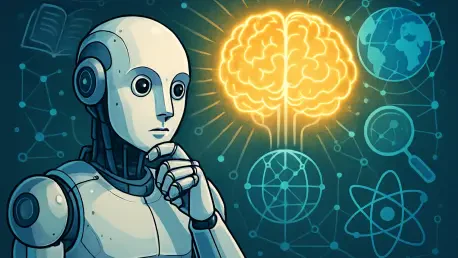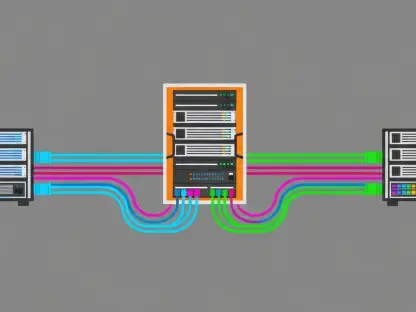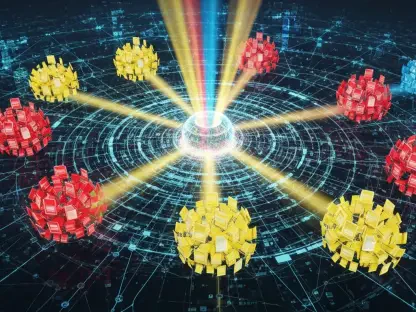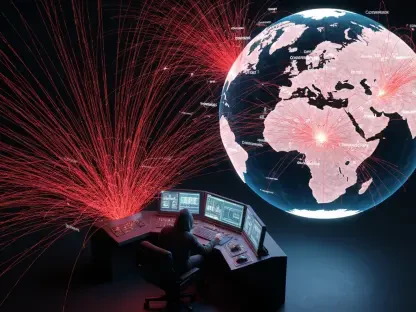In an era where artificial intelligence shapes nearly every facet of daily life, the question of how humans perceive and assign knowledge to robots has emerged as a compelling field of study, prompting deep exploration into human-robot dynamics. Recent research by T. Matsui, published in Discover Artificial Intelligence, delves into this intricate topic by examining the ways people evaluate robots as entities capable of possessing knowledge. Utilizing the Justified True Belief (JTB) framework—a philosophical model that defines knowledge as justified true belief—this study probes whether robots can genuinely be seen as knowledgeable or if they are merely executing sophisticated algorithms. The implications of this inquiry extend far beyond academic curiosity, touching on real-world applications as AI becomes deeply embedded in vital sectors such as healthcare, education, and law enforcement. As robots assume increasingly autonomous roles, understanding human perceptions of their intelligence is critical for fostering safe and effective interactions. Matsui’s work provides a timely perspective on the evolving dynamic between humans and machines, challenging conventional ideas about what constitutes knowledge in non-human agents.
Unpacking Performance-Based Perceptions
The foundation of Matsui’s research reveals a striking pattern in how humans attribute knowledge to robots, primarily through the lens of performance. When a robot successfully completes a task, individuals are far more inclined to regard it as intelligent or knowledgeable, often without considering the complex programming or algorithms driving its actions. This outcome-focused perception, consistently observed across diverse groups in Matsui’s empirical surveys, suggests that visible results carry more weight than an understanding of the internal mechanisms at play. Such a trend raises important questions about the depth of human judgment when it comes to assessing machine intelligence, as it appears to prioritize effectiveness over comprehension of how or why a robot functions as it does. This performance-driven approach may simplify interactions but risks creating a superficial view of robotic capabilities that overlooks their limitations.
Matsui adapts the JTB framework to analyze this phenomenon, assessing whether a robot’s actions can be deemed justified through their programming, true in terms of accurate outcomes, and believed by humans who attribute knowledge to them. This application highlights a significant disconnect between traditional philosophical definitions of knowledge and the practical ways humans perceive AI. While the JTB model provides a structured way to evaluate knowledge, applying it to robots reveals gaps in how society understands machine intelligence. For instance, a robot might produce accurate results, but does it truly “know” in the human sense, or is it merely following pre-set instructions? This discrepancy prompts a broader discussion on redefining knowledge in the context of artificial agents, pushing the boundaries of both technology and philosophy to align human expectations with reality.
Trust and Its Complex Implications
Trust plays a pivotal role in shaping human-robot interactions, and Matsui’s findings underscore its dual nature as both a benefit and a potential hazard. When individuals perceive robots as knowledgeable, their confidence in these systems often grows, facilitating smoother collaboration in high-stakes environments like medical diagnostics or emergency response. This increased trust can enhance efficiency and encourage the adoption of AI in critical roles where precision and reliability are paramount. However, Matsui cautions that such confidence can easily tip into overtrust, where users overestimate a robot’s abilities and rely on it excessively, potentially leading to costly mistakes or oversights. This delicate balance between necessary trust and dangerous overreliance emerges as a central concern, particularly as robots become more integrated into decision-making processes across various industries.
To mitigate the risks of misplaced trust, Matsui advocates for greater transparency in AI design, emphasizing the importance of revealing how robots operate and make decisions. By providing users with clear insights into the capabilities and limitations of these systems, designers can help set realistic expectations and prevent overconfidence. Transparent algorithms and accessible explanations of robotic functions serve as tools to build a more grounded trust, ensuring that human-machine partnerships are based on accurate perceptions rather than assumptions. This approach not only safeguards against potential errors but also fosters a deeper understanding among users, enabling them to engage with technology in a more informed and cautious manner. As AI continues to evolve, prioritizing such transparency will be essential for maintaining safe and effective collaborations.
Ethical and Philosophical Challenges
Delving into the philosophical dimensions, Matsui’s research raises profound questions about the moral responsibilities of robots perceived as knowledgeable. As AI systems gain autonomy and take on roles that influence significant outcomes, the issue of accountability becomes increasingly complex. If a robot is viewed as possessing knowledge, should it bear responsibility for its actions in the same way a human might, or does that obligation rest solely with its creators and operators? This ethical dilemma extends beyond technical functionality into the realm of societal norms, challenging existing frameworks for responsibility and prompting a reevaluation of how autonomous machines are integrated into decision-making roles. The implications of assigning moral weight to robotic actions could reshape legal and ethical standards, necessitating new guidelines to address these emerging realities.
Another layer of complexity arises from cognitive biases, particularly anthropomorphism, where individuals attribute human-like traits to robots. This tendency often leads to inflated expectations about a robot’s cognitive capacity, skewing perceptions and interactions. Matsui suggests that such biases can be addressed through intentional design strategies that avoid reinforcing human-like characteristics and through user education that clarifies the mechanical nature of AI. By minimizing these misconceptions, technology can be presented in a way that encourages realistic engagement, preventing users from assuming robots possess emotions or understanding akin to humans. Tackling these biases is not merely about correcting perceptions; it is about ensuring that human-robot interactions are built on a foundation of clarity, reducing the risk of errors born from misunderstanding and fostering a more pragmatic relationship with AI.
Shaping Future Interactions Through Education
Matsui’s study also highlights the growing need for AI literacy as a cornerstone of responsible technology integration. As robots and AI systems become ubiquitous, equipping individuals with the knowledge to critically engage with these tools is paramount. Educational initiatives that teach the functionalities and boundaries of machine intelligence can empower future generations to interact with technology in a discerning manner, avoiding blind trust or undue skepticism. Such programs would ideally cover the basics of how AI operates, its potential benefits, and its inherent limitations, fostering a balanced perspective. By embedding AI education into academic curricula and public discourse, society can cultivate a more informed user base, better prepared to navigate the complexities of human-machine collaboration in an increasingly automated world.
Beyond formal education, Matsui points to the value of ongoing public awareness efforts that keep pace with rapid advancements in AI. Regular updates on technological developments, accessible resources, and transparent communication from tech developers can help demystify robots and their capabilities. This continuous learning approach ensures that societal perceptions evolve alongside innovation, preventing outdated or erroneous views from taking root. Moreover, emphasizing ethical considerations in these educational efforts can guide users to think critically about the broader implications of AI, from privacy concerns to moral accountability. As technology progresses, sustaining an educated populace will be vital for harnessing AI’s potential while safeguarding against its pitfalls, ensuring that human-robot interactions remain both innovative and grounded.
Reflecting on a Path Forward
Looking back, Matsui’s exploration into the human attribution of knowledge to robots through the JTB framework offers a nuanced understanding of a rapidly shifting landscape. The research illuminates how performance often dictates perceptions of robotic intelligence, how trust operates as both an enabler and a risk, and how ethical questions around accountability demand attention. It also underscores the pervasive influence of cognitive biases and the pressing need for educational reforms to support informed engagement with AI. These insights lay a critical foundation for addressing the challenges of integrating robots into society. Moving forward, the focus should shift to actionable strategies—developing transparent AI systems, embedding ethics into design, and prioritizing public literacy. By building on these findings, technology creators and policymakers can craft frameworks that ensure robots are seen not as mysterious entities but as tools with defined roles, fostering a future where human-machine collaboration thrives on clarity and responsibility.









